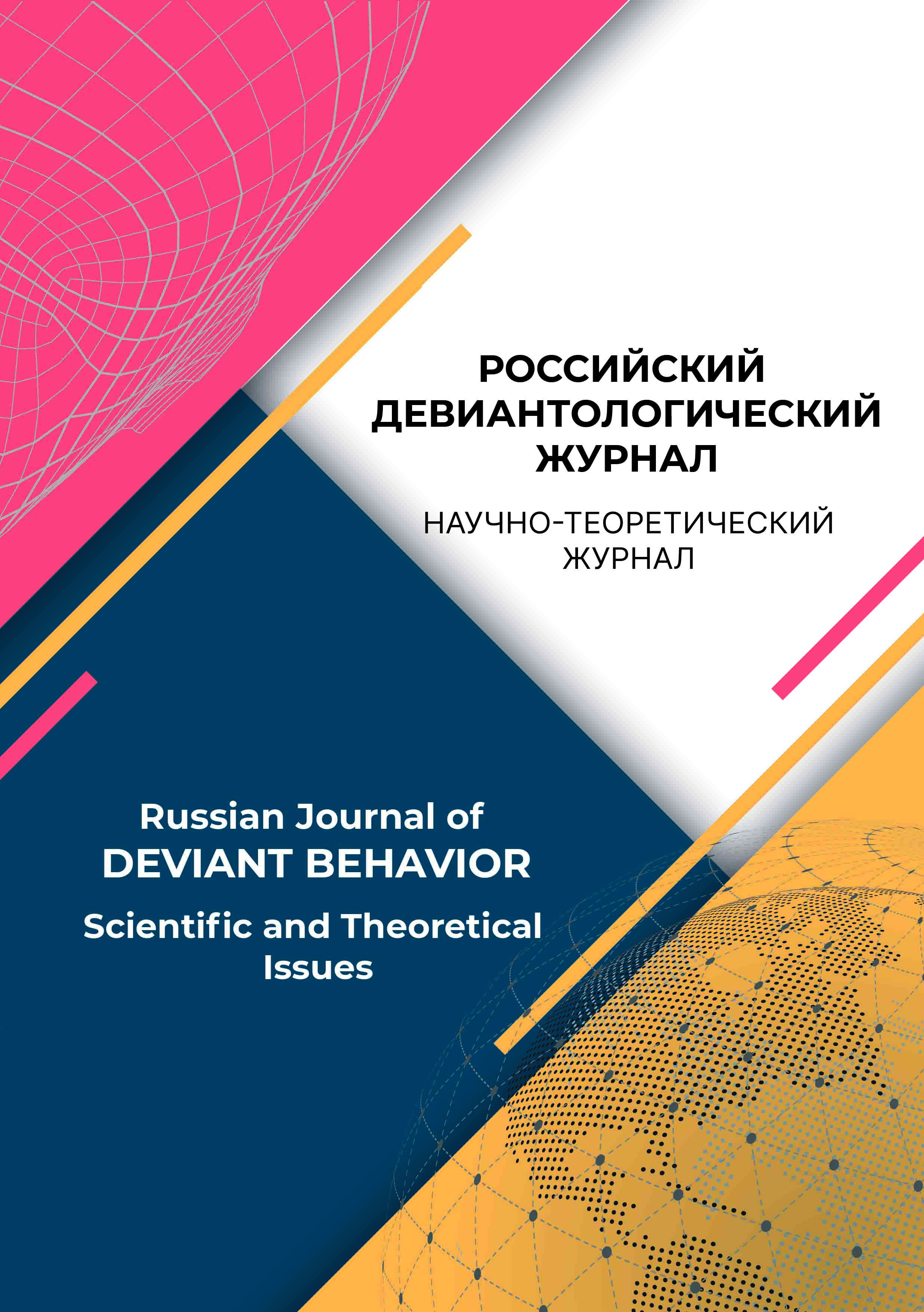Minsk, Belarus
The author considers the interindividual aspect of the system description of the criminal propensity of a person. Criminal propensity is described from two perspectives. From the external point of view, it is described as a phenomenon, and from the internal point of view, the author offers an essential, psychological characteristic. Characteristics of manifestation of criminal propensity are widely used in the practice of social work, including law enforcement practice. They are designed to display a set of parameters of such propensity as a potential phenomenon, indicating the type of crime that can be committed by an individual, and under what circumstances, as well as under which motivational and functional mental state it can be possible. As a conclusion, the author proposes a systematization of the explored characteristics and an array of the typological descriptions.
criminogenic personality, personality of offender, criminal propensity of personality, criminal behavior, conditions of manifestation of criminal propensity, personal acceptability of a criminal act
1. Pastushenya, A. N. (1998). Kriminogennaya sushchnost’ lichnosti prestupnika: metodologiya poznaniya i psihologicheskaya koncepciya: monografiya. Minsk: Akademiya MVD Respubliki Belarus’.
2. Poznyshev, S. V. (1926). Kriminal’naya psihologiya: Prestupnye tipy. Leningrad: Gos. izd-vo.
3. Stolyarenko, A. M. (2011). Psihologicheskaya sistemologiya: teoriya, issledovaniya, praktika: monografiya. Moskow: Yuniti-dana.
4. Frolov, I. T. (1991). Filosofskij slovar’: 6-e izd., pererab. i dop. Moskow: Politizdat.
5. Gallupe, O., McLevey, J., & Brown, S. (2019). Selection and Influence: A Meta-Analysis of the Association Between Peer and Personal Offending. Journal of Quantitative Criminology, 35, 313-335. https://doi.org/10.1007/s10940-018- 9384-y
6. Keatley, D. A., Golightly, H., Shephard, R., Yaksic, E., & Reid, S. (2018). Using Behavior Sequence Analysis to Map Serial Killers’ Life Histories. Journal of Interpersonal Violence, 36(5-6), 2906-2928. https://doi.org/10.1177/0886260518759655
7. Khoshnood, A., & Fritz, V. M. (2017). Offender Characteristics: A Study of 23 Violent Offenders in Sweden. Deviant Behavior, 38(2), 141-153. https://doi.org/10.1080/01639625.2016.1196957
8. Leclerc, B., Reynald, D., Wortley, R., Cook, A., & Cale, J. (2022). An Examination of Noncompleted Sexual Offences, Offenders’ Perceptions of Risks and Difficulties and Related Situational Factors. Journal of Research in Crime and Delinquency, 002242782210852. https://doi.org/10.1177/00224278221085244
9. Ouellet, M., Bouchard, M., & Charette, Y. (2018). One gang dies, another gains? The network dynamics of criminal group persistence. Criminology, 57(1), 5-33. https://doi.org/10.1111/1745-9125.12194
10. Poehacker, S., Phillips, D., Riggs, J., & Lauterbach, D. (2017). Longitudinal Trajectory of Exposure to Psychological Interpersonal Violence. Journal of Interpersonal Violence, 35(17-18), 3331-3354. https://doi.org/10.1177/0886260517707309
11. Ragan, D. T. (2020). Similarity between deviant peers: Developmental trends in influence and selection. Criminology, 58(2), 336-369. https://doi.org/10.1111/1745-9125.12238
12. Silver, J. R., & Silver, E. (2020). The Nature and Role of Morality in Offending: A Moral Foundations Approach. Journal of Research in Crime and Delinquency, 58(3), 343-380. https://doi.org/10.1177/0022427820960201
13. Suonpää, K., & Savolainen, J. (2019). When a Woman Kills Her Man: Gender and Victim Precipitation in Homicide. Journal of Interpersonal Violence, 34(11), 2398-2413. https://doi.org/10.1177/0886260519834987
14. Van Sleeuwen, S. E. M., Steenbeek, W., & Ruiter, S. (2021). When Do Offenders Commit Crime? An Analysis of Temporal Consistency in Individual Offending Patterns. Journal of Quantitative Criminology, 37, 863-889. https://doi. org/10.1007/s10940-020-09470-w
15. Weiss, D. B., Testa, A., & Rennó Santos, M. (2020). Institutional anomie and cross-national differences in incarceration. Criminology, 58(3), 454-484. https://doi.org/10.1111/1745-9125.12242














